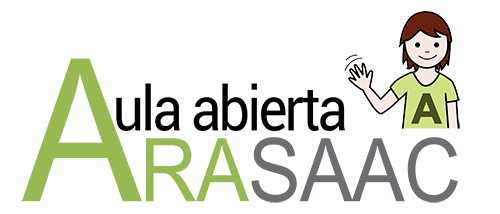Autores/as
Manuela Miranda
Verónica Martínez
Eliseo Diez-Itza
Universidad de Oviedo
Raquel Rodríguez
Póster presentado en el Congreso Mundial del Síndrome de Down,
WDSC 2018 Glasgow, United Kingdom, 25 a 27 julio 2018.
___________________________________________________________________
Resumen “Intervención pragmática en niños y adolescentes con Síndrome de Down: el papel de los apoyos en la construcción de los scripts“
Las personas con síndrome de Down (SD) muestran una relativa fortaleza en la cognición no verbal, habilidades sociales y comprensión del lenguaje, que les permite un buen desempeño en tareas narrativas. La intervención pragmática a partir de narraciones estructuradas permite al sujeto comunicar experiencias con coherencia y resulta altamente efectiva cuando se usan apoyos visuales.
El objetivo es doble: determinar si los sujetos con SD narran las historias coherentemente y utilizan marcadores pragmáticos adecuados a las exigencias del discurso y contexto comunicativo; y mejorar las habilidades narrativas cuando la intervención se apoya en una presentación Prezi con pictogramas y apoyo verbal.
El diseño es cuasi-experimental pretest postest. La muestra está formada por 10 sujetos con SD entre 9 y 17 años pertenecientes a la Asociación Síndrome de Down del norte de España.
En el pretest y postest cada sujeto contaba dos scripts de diferente dificultad, sólo con apoyo conversacional. Se realizó una sesión semanal de intervención durante cuatro semanas en la que se les entrenaba a utilizar, mediante imitación verbal, los elementos léxicos y discursivos básicos para contar la historia, utilizando pictogramas ARASAAC presentados en soporte Prezi y con los apoyos conversacional, histórico y psicológico de la investigadora. Las narraciones del pretest y postest fueron grabadas y transcritas utilizando el Proyecto CHILDES (MacWhinney, 2000). Se codificó y analizó la estructura narrativa en términos de eventos y episodios, y la frecuencia de los marcadores discursivos.
Los resultados muestran una mejora en coherencia, recuerdo de la historia y marcadores después de la intervención. Se concluye que este tipo de intervención refleja la importancia del apoyo visual, la imitación verbal y los apoyos del interlocutor en el desarrollo lingüístico a nivel pragmático, léxico y gramatical en el SD.
Abstract „Pragmatic intervention in children and adolescents with Down syndrome: The role of support in script construction“
Persons with Down Syndrome (DS) show a relative strength in non-verbal cognition, social abilities and language comprehension, which enable them a good performance in narrative tasks. Pragmatic intervention based on structured narratives allow the subject to communicate their experiences in a coherent way and it is highly effective when visual support is used. The aim is double: to determine whether DS subjects narrate stories coherently and use pragmatic markers suitable for discourse and communicative context; and improve narrative abilities when intervention is supported by a Prezi presentation with pictograms and verbal support. Design: It is a pre-test post-test experimental design with control group. Methods: The sample is 20 subjects, ten with DS ranging in age from 6 to 16, belonging to the Down Syndrome Association northern Spain, matched with ten 5-year-old typical development subjects in mean length utterance (MLU). In pre-test and post-test, each subjects narrated two scripts of different difficulty, only with conversational support. A weekly session took place for four weeks, where the subjects were trained through verbal imitation to use basic lexical and discursive items to tell the story, employing ARASAAC pictograms in Prezi presentation and with conversational, historical and psychological support of the researcher. Pre-test and post-test narrations were recorded and transcribed using the CHILDES Project (MacWhinney, 2000). The narrative structure was coded and analyzed in terms of events and episodes. The frequency of discourse markers was also coded and analyzed. The data was analyzed with statistical program SPSS. Results: The subjects show an improvement in coherence, recall of the story, markers, MLU, Types and Tokens. Implications: This type of intervention show the importance of imitation and visual support in linguistic development at a pragmatic, lexical and grammatical levels in DS.
Descargar el póster en pdf












